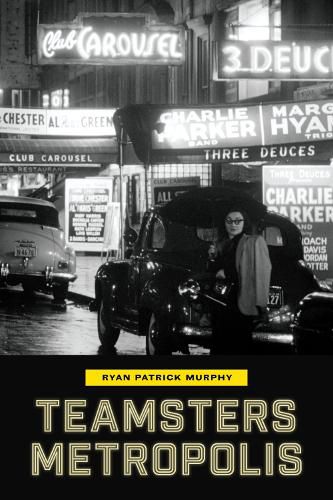Readings Newsletter
Become a Readings Member to make your shopping experience even easier.
Sign in or sign up for free!
You’re not far away from qualifying for FREE standard shipping within Australia
You’ve qualified for FREE standard shipping within Australia
The cart is loading…






In the 1950s, The International Brotherhood of Teamsters empowered poor immigrants who had grown up in the crowded blocks of the central city to move upward and outward to comfortable suburbs. It delivered unprecedented benefits to workers-especially to those in retail, services, and light manufacturing-locking in hourly pay that bought the patio furniture sets, the pontoon boats, and the station wagons that defined the consumer culture of the decade. Yet suburban comfort came with strict, new institutions that defined the middle-class culture of the era: the nuclear family, heterosexual monogamy, the husband breadwinner, and the dependent wife. Many workers yearned for the pleasures they left behind in the core of the industrial city, even as poor people, people of color, and queer people were locked out of the suburbs.
Teamsters Metropolis argues that the union achieved unprecedented organizing success in the immediate postwar period precisely because its members defied bourgeois cultural standards. They wore overly flamboyant clothes, instigated jarringly violent confrontations, used aliases, extorted money, flouted the law, and often blended friendship, sex, and love in a way that challenged the boundaries of heteronormativity. Perhaps no one exemplified this freedom more than Jimmy Hoffa, who delivered better pay and worker conditions to marginal workers while also using coercive tactics, embezzling money, and colluding with the Mafia. Rather than impeding the union's growth, unruly organizing, illicit business techniques, and dissident cultural practices appealed to prospective members and offered an opportunity to circumvent some of the suburban regulations, helping the International Brotherhood of Teamsters become the largest U.S. union of the mid-twentieth century.
$9.00 standard shipping within Australia
FREE standard shipping within Australia for orders over $100.00
Express & International shipping calculated at checkout
In the 1950s, The International Brotherhood of Teamsters empowered poor immigrants who had grown up in the crowded blocks of the central city to move upward and outward to comfortable suburbs. It delivered unprecedented benefits to workers-especially to those in retail, services, and light manufacturing-locking in hourly pay that bought the patio furniture sets, the pontoon boats, and the station wagons that defined the consumer culture of the decade. Yet suburban comfort came with strict, new institutions that defined the middle-class culture of the era: the nuclear family, heterosexual monogamy, the husband breadwinner, and the dependent wife. Many workers yearned for the pleasures they left behind in the core of the industrial city, even as poor people, people of color, and queer people were locked out of the suburbs.
Teamsters Metropolis argues that the union achieved unprecedented organizing success in the immediate postwar period precisely because its members defied bourgeois cultural standards. They wore overly flamboyant clothes, instigated jarringly violent confrontations, used aliases, extorted money, flouted the law, and often blended friendship, sex, and love in a way that challenged the boundaries of heteronormativity. Perhaps no one exemplified this freedom more than Jimmy Hoffa, who delivered better pay and worker conditions to marginal workers while also using coercive tactics, embezzling money, and colluding with the Mafia. Rather than impeding the union's growth, unruly organizing, illicit business techniques, and dissident cultural practices appealed to prospective members and offered an opportunity to circumvent some of the suburban regulations, helping the International Brotherhood of Teamsters become the largest U.S. union of the mid-twentieth century.